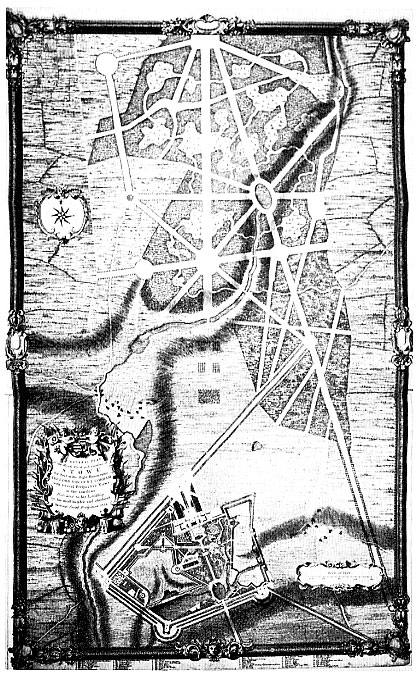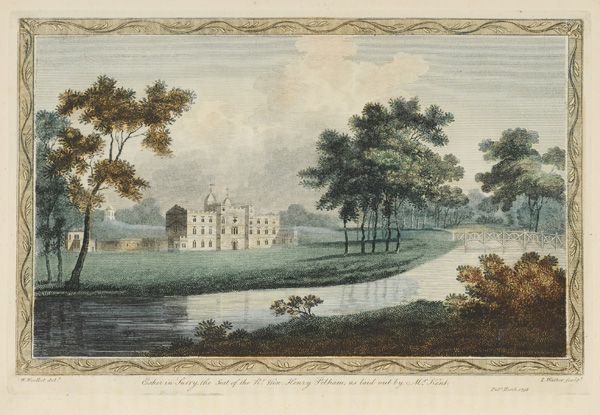We went to France, even though, alas, I of course wanted to go to England. But with two teens who have taken years of French, France won out. (That's okay, some day it will be Regency England tour without the teens!)
Below is a picture of the very French gardens at the palace of Versailles, outside of Paris. Notice the geometrical lines, the regularity imposed on the disorder of nature, which indicted how the king had the power to impose his will on his vast kingdom. (The source on this is here, a PBS link, but the picture is mine.)
The long sight lines are a metaphor for the king's power, which extends in all directions, as far as the eye can see.
But just around the corner (okay, these gardens are pretty vast, so farther than that) is Marie Antoinette's Hamlet (the "Hameau de la Reine") which was her private retreat in the park of the palace built around 1785-92. This retreat was complete with rustic buildings and was a real working farm. It has a pond and a windmill and various little buildings. But the best part, at least for me, is that it has an English garden!
Notice the meandering gravel paths that wind around the sights,
the benches that offer a place to admire the view or to reflect on the scenery...
And here's the requisite folly--the classical Temple of Love, with Cupid in the middle.
From far away, it looked really small.
Here are some shady characters crossing a little bridge.
The paths, just as in Jane Austen's day, were quite wide, condusive to talking and walking.
But the best part of all was the ha-ha wall. (Another shady character standing atop that!)
So you can really tell a difference between the winding paths and broken vistas of the English garden vs. the linearity and expansiveness of the French one. Voila!
Next stop for me is RWA Nationals! See you all there!










